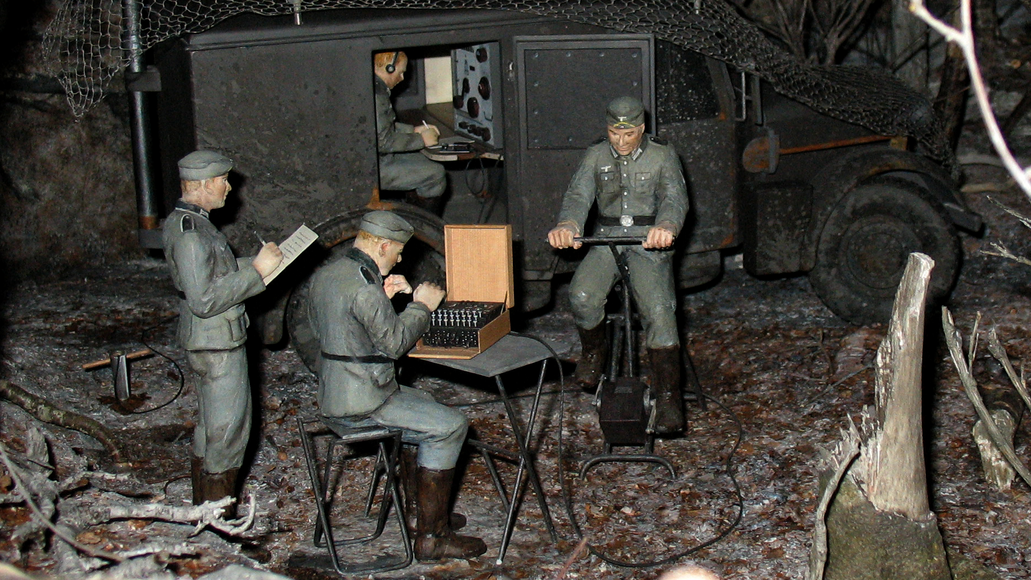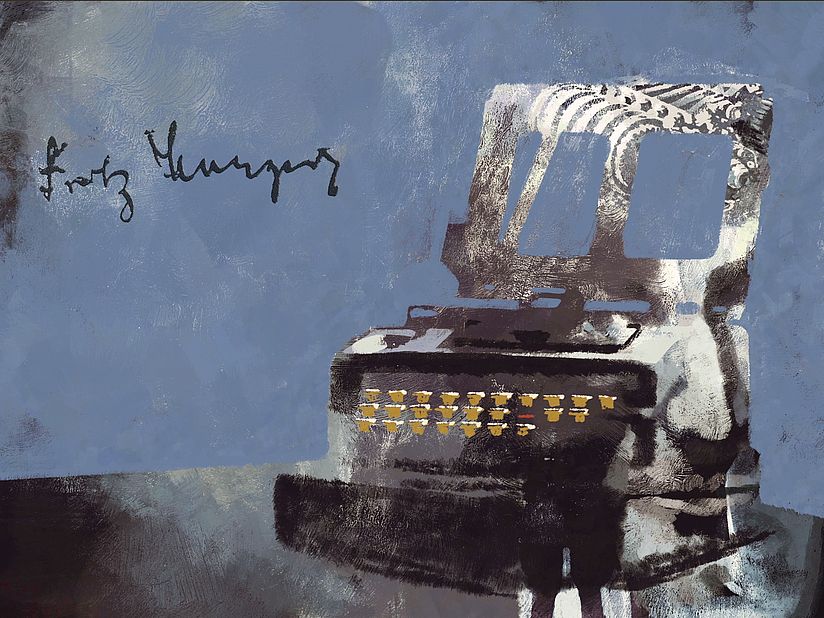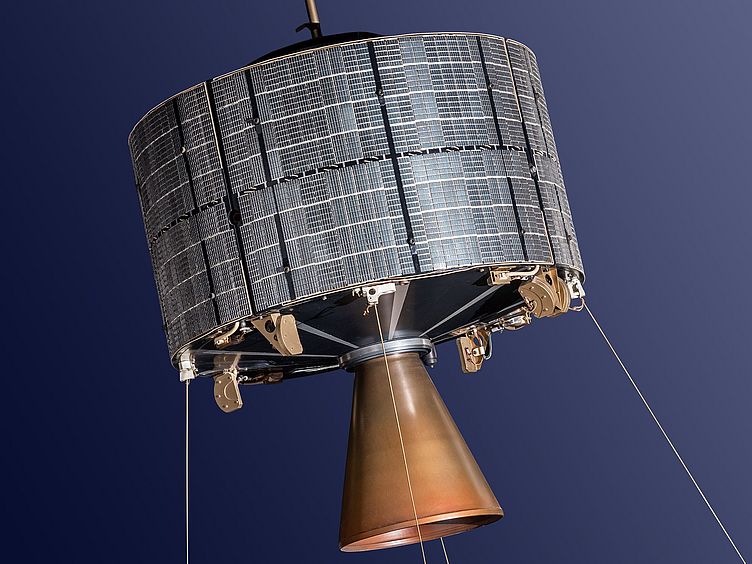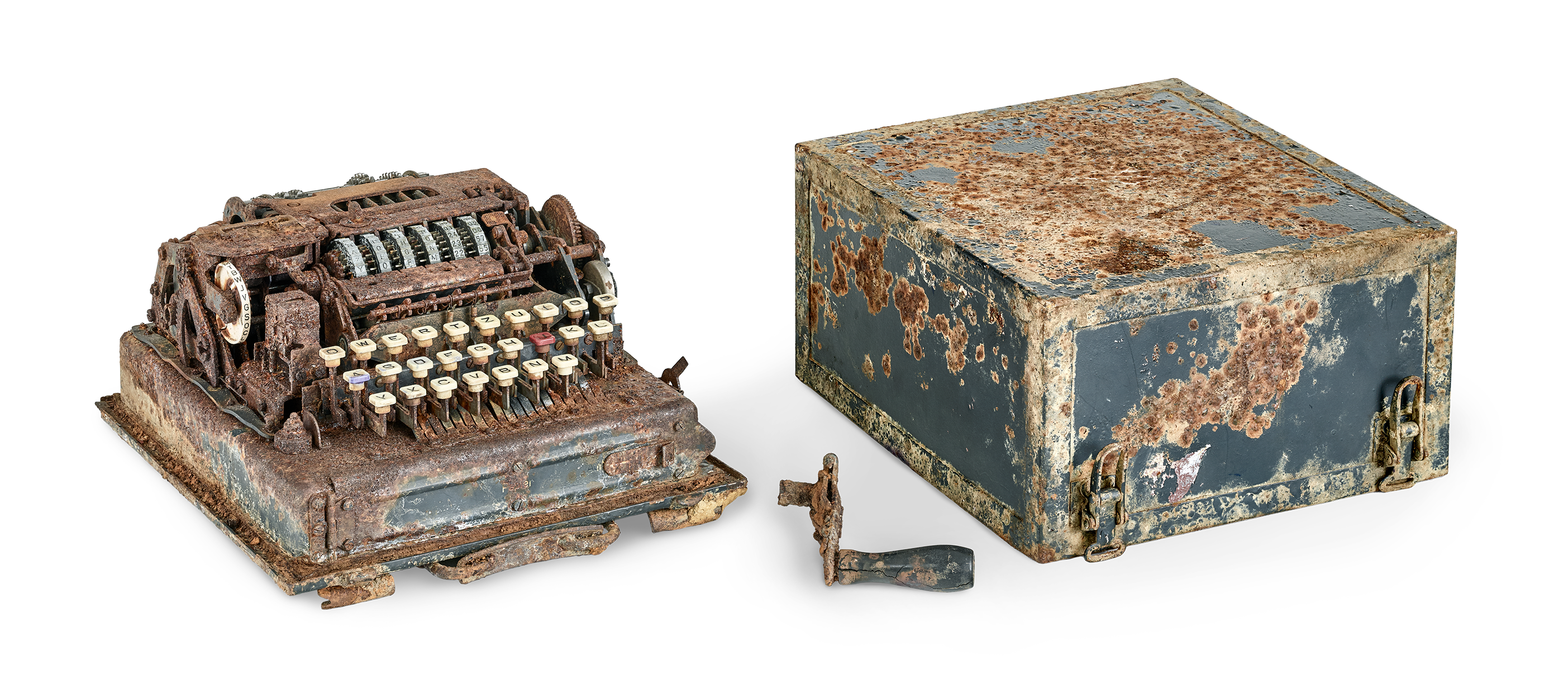
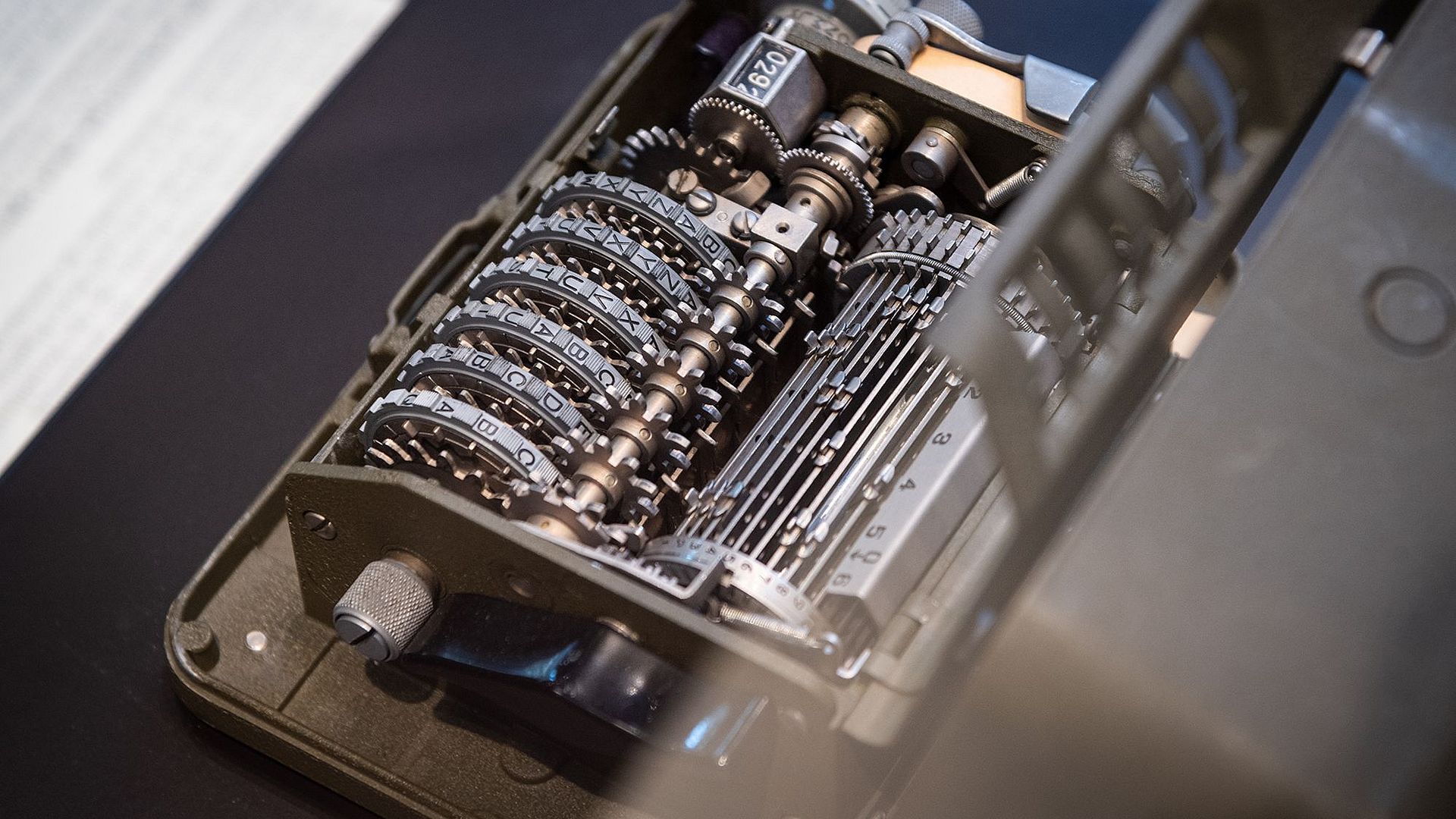
Photo: Deutsches Museum Muenchen | Christian Illing
Communication Information Media
Image Script Codes – Making communication work
From letterpress printing to cryptology: for thousands of years, we have found ways to exchange information and store knowledge. See and experience this first hand – and even try things out yourself!
Image Script Codes Exhibition – overview
The exhibition is divided into the thematic areas of Image, Print, Writing and Cryptology. From the abundance of images, including RAF wanted posters, Otl Aicher’s 1972 Olympic posters and a gallery featuring Vincent van Gogh’s famous sunflower paintings, the exhibition moves on to image printing and letterpress printing. Here, the “Gutenberg Galaxy” takes centre stage. Opposite is the large printing press hall with impressive machines such as the high-speed press and the rotary printing press. Writing systems, which play a key role in printing technology, are covered in the next section of the exhibition. The focus is on the role of writing systems as a store of knowledge and cultural mediator across temporal and spatial boundaries. Cryptology then explores secret communication, providing insights into encryption and deciphering from antiquity to the digital age.
Image Script and Codes - Introduction
From cave paintings to letterpress printing and emoji: people have been using images and writing to exchange information and store their knowledge for thousands of years. Common codes ensure that this type of communication works. This means that there is agreement on the meaning of an image (such as a smiley face) or a sequence of characters.
"Image Script Codes" sheds light on how we use these signs and the media to transmit them. The exhibition traces historical origins and upheavals and explains the basics, from traditional printing technology to writing in the digital age and post-quantum encryption.
“The medium is the message.”
Highlights of the new exhibition
Offset Printing Press Rheingold, Schnellpressenfabrik Albert & Cie. AG, Frankenthal/Pfalz, 1925, Inventory Number 53228. Photo: Deutsches Museum | Konrad Rainer
Printing
Beginnings of offset printing - early offset printing - Offset printing: Offset printing developed at the beginning of the 20th century. In this flat printing process, printing surfaces on the printing plate are prepared to be grease-friendly, while non-printing surfaces are prepared to be water-friendly. A rubber cylinder first picks up the ink and transfers it to the paper. This indirect depositing of the ink is called "offset".
“For every complex problem, there is a solution that is simple, and that solution is wrong.”
Cipher Cylinder M-94, U.S. Army Signal Corps, USA, circa 1930, Inventory Number 2018-323. Donation: Winkelbauer-Timmann Family, Pöcking. Photo: Deutsches Museum | Konrad Rainer
Crypto
Cipher Machines: American President Thomas Jefferson (1743−1826) is far ahead of his time. He invents the cipher wheel, a precursor to later rotors in cipher machines: rolls with different cipher alphabets are threaded onto a rod. Their sequence forms the secret key. Even during World War II, the U.S. Army uses the M-94, a modified form of Jefferson's cipher device, for encrypting tactical messages.
When will this event take place?
Discover which activities are taking place by checking our daily programme, which is published at around 9.20 each day. Our programme changes daily and includes guided tours, demonstrations, science shows and hands-on activities for individual visitors and small groups of up to five people. All programme events are held in German. They begin either directly where the activity is set to take place or at a guided-tour meeting point in the relevant exhibition.
Facts and Figures
- Location: Level 2
- Exhibition space: 1060 m2
- Exhibits and models: approx. 300
- Demonstrations and interactives: 32
- Dioramas: 1
- Media stations: 25
View Inside the Image Script Codes Exhibition
We concede
Senefelder und Linotype
The installation of the new exhibitions continues. Here you can see the arrival of two printing presses for “Bild Schrift Codes”. Senefelder bar press and Linotype document important milestones in printing technology.
Do you have technical questions?
![]()
Dr. Sonja Neumann
Curator
Department of photo and film technology, writing and printing technology, paper technology and office technologyDeutsches Museum
80306 MunichTelephone +49 89 2179 350
Fax +49 89 2179 99350
Email Sekr-Ausstellungen-Sammlungen@deutsches-museum.de
Do you have organizational questions?
Cornelia Schubert
Assistance to department heads, main department heads and curators
Susanne Schmölz
Assistance to department heads, main department heads and curators

![[Translate to English:] zur Filmseite](/assets/_processed_/6/4/csm_Poster_NOQR_GEHEIME_LEBEN_FRITZ_DE_01255474dc.jpg)

